Are you looking to create a sustainable living space that reflects your commitment to eco-conscious living? When it comes to designing an HDB master bedroom, there’s an exciting world of possibilities waiting for you. From green building solutions to energy-efficient design principles, you can transform your master bedroom into a stylish and eco-friendly haven.
In This Article
ToggleIn this article, we will explore innovative eco-friendly HDB design tactics specifically focused on creating sustainable and stylish master bedroom designs. We will discuss various aspects of sustainable housing, including eco-conscious renovation, green building solutions, energy-efficient home design, environmentally friendly architecture, and the use of eco-friendly building materials. By embracing these principles, you can transform your master bedroom into a truly sustainable living space.
Key Takeaways:
- Create an eco-friendly HDB master bedroom design that incorporates sustainable materials and green building solutions.
- Choose energy-efficient lighting options to reduce your energy consumption.
- Optimize natural ventilation in your master bedroom to improve indoor air quality and reduce the need for artificial cooling.
- Select eco-friendly furniture made from sustainable materials and repurpose existing furniture to minimize waste.
- Consider eco-friendly bedding and textiles to create a healthier and more sustainable sleep environment.
Incorporating Sustainable Materials
Creating an eco-friendly HDB master bedroom design involves incorporating sustainable materials. By choosing materials that are environmentally friendly and have a low carbon footprint, you can minimize the environmental impact of your renovation and contribute to a more sustainable living space.
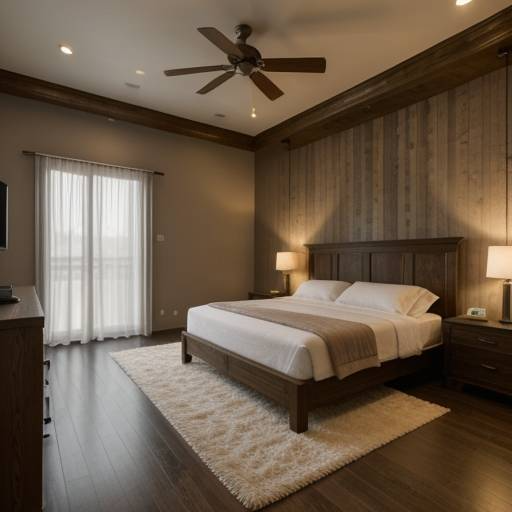
Here are some sustainable material options that can seamlessly blend with the design of your master bedroom:
- Reclaimed Wood: Utilize reclaimed wood for furniture, flooring, or wall paneling. This not only adds a rustic charm but also reduces the demand for new timber, thus conserving natural resources.
- Bamboo: Bamboo is a fast-growing, renewable resource that can be used for flooring, furniture, and even textiles. It’s durable, eco-friendly, and adds a touch of natural elegance to any space.
- Recycled Glass: Consider incorporating recycled glass in the form of tiles or countertops. This not only diverts waste from landfills but also adds a unique and contemporary touch to your master bedroom design.
- Eco-friendly Paints: Opt for low or zero-VOC (volatile organic compound) paints, which emit fewer harmful chemicals into the environment. These paints are available in a wide range of colors and finishes, ensuring you don’t compromise on style while creating a sustainable living space.
By integrating these sustainable materials into the design of your master bedroom, you not only reduce your ecological footprint but also create a visually appealing and green interior design.
Energy-Efficient Lighting Solutions
In an eco-friendly HDB design, lighting plays a crucial role in enhancing the aesthetics and functionality of the master bedroom. By choosing energy-efficient lighting solutions, you not only reduce your energy consumption but also contribute to a more sustainable lifestyle. Here, we will discuss different types of energy-efficient lighting options that can be effectively used to create a well-lit and energy-efficient master bedroom.
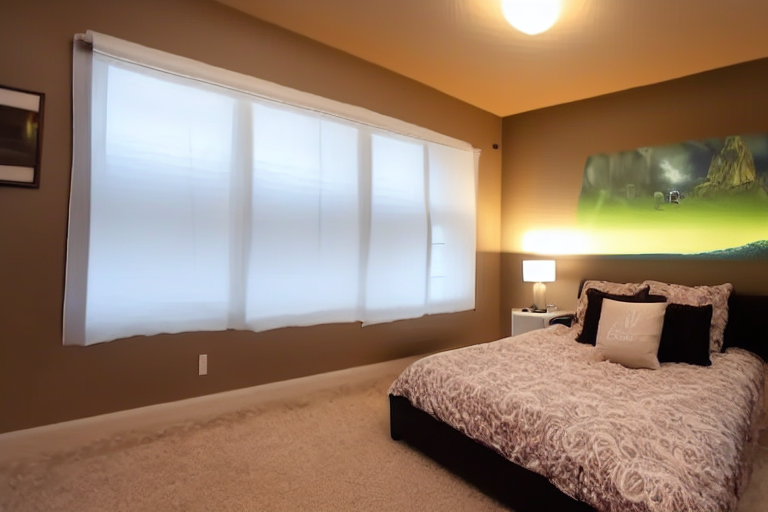
1. LED Lighting: LED lights are not only energy-efficient but also have a longer lifespan compared to traditional incandescent bulbs. By replacing your outdated bulbs with LED lights, you can significantly reduce energy consumption without compromising on brightness or style.
2. Natural Light: Maximizing natural light in your master bedroom not only reduces the need for artificial lighting during the day but also enhances the overall ambiance. Consider installing larger windows or strategically placing mirrors to reflect natural light and create a bright and airy atmosphere.
3. Dimmer Switches: Installing dimmer switches allows you to adjust the intensity of the light in your master bedroom according to your preferences and needs. This not only saves energy but also creates a cozy and relaxing environment.
4. Task Lighting: Utilizing task lighting, such as reading lamps or bedside sconces, allows you to focus light where it is needed, reducing the overall energy consumption in the room. These targeted lighting options also add a touch of style and functionality to your master bedroom.
5. Motion Sensor Lighting: Incorporating motion sensor lights in areas such as closets or dressing areas eliminates the need for manual switches and ensures that lights are not left on when not in use, further conserving energy.
By implementing these energy-efficient lighting solutions, you can create a well-lit and inviting master bedroom while minimizing your environmental footprint. Embrace the potential of eco-friendly HDB designs and make a positive impact on both your energy bills and the planet.
Optimizing Natural Ventilation
Proper ventilation is crucial for maintaining a healthy and comfortable living space. In an eco-friendly HDB design, optimizing natural ventilation not only reduces the need for artificial cooling but also improves the overall sustainability of the living environment. By allowing fresh air to circulate effectively, you can enhance indoor air quality and reduce energy consumption.
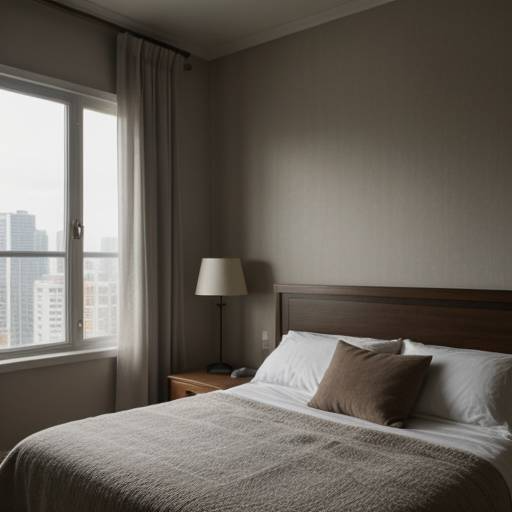
Strategies for Enhancing Natural Ventilation
There are several strategies you can employ to optimize natural ventilation in your master bedroom:
- Position windows strategically: Place windows on opposite walls to encourage cross-ventilation, capturing breezes from multiple directions.
- Install adjustable vents: Incorporate adjustable vents in your bedroom design to control the flow of air while ensuring adequate ventilation.
- Use window treatments wisely: Choose window treatments that allow for airflow, such as blinds or sheer curtains, to facilitate natural ventilation even when windows are closed.
Additionally, consider the following tips to maximize the benefits of natural ventilation:
- Create airflow pathways: Arrange furniture and decor to avoid blocking the natural airflow pathway within the master bedroom.
- Utilize ceiling fans strategically: Ceiling fans help enhance natural ventilation by circulating air effectively throughout the room.
- Embrace outdoor living spaces: If applicable, design your master bedroom with access to an outdoor balcony or patio, allowing for greater airflow and connection with nature.
By implementing these strategies, you can optimize natural ventilation in your eco-friendly HDB design, creating a sustainable living space that promotes both comfort and environmental consciousness.
Green Bedroom Furniture Choices
The choice of bedroom furniture plays a crucial role in creating an eco-friendly HDB design and a sustainable living space. In this section, we will explore various eco-friendly furniture options that are made from sustainable materials, such as reclaimed wood or bamboo. By opting for furniture that is both stylish and environmentally conscious, you can reduce your carbon footprint and contribute towards a greener future.
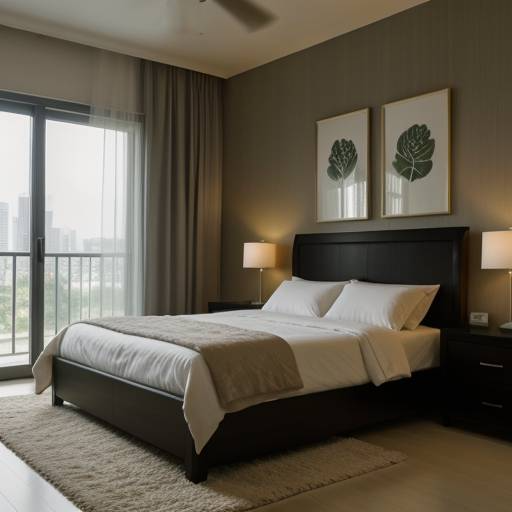
Furniture made from sustainable materials
When selecting furniture for your master bedroom, choose pieces that are made from sustainable materials. Reclaimed wood, for example, is an excellent option as it reduces the demand for new timber and helps to preserve forests. Bamboo is another sustainable choice, as it is a fast-growing plant that can be harvested without causing significant environmental impact. By incorporating these materials into your bedroom design, you can create a more eco-friendly space while adding a touch of natural beauty.
Repurposing existing furniture
Another way to make your bedroom design more sustainable is by repurposing existing furniture. Instead of buying new pieces, consider giving your old furniture a new lease on life. With a little creativity and some DIY skills, you can transform old dressers, nightstands, and bed frames into unique and environmentally friendly pieces. Repurposing not only reduces waste but also adds character and a personal touch to your master bedroom.
Reducing waste in the design process
Reducing waste is a fundamental principle of eco-friendly design. When it comes to choosing bedroom furniture, look for brands that prioritize sustainability and minimize waste in their production processes. Many furniture companies now offer pieces made from recycled materials or utilize innovative manufacturing techniques that reduce environmental impact. By supporting these brands, you can contribute to a more circular economy and promote a greener approach to furniture design.
- Choose furniture made from sustainable materials
- Repurpose existing furniture
- Support brands that prioritize sustainability
By making conscious choices in selecting bedroom furniture, you can create an eco-friendly HDB design that aligns with your values of sustainability and style. The careful consideration of sustainable materials and repurposing existing furniture not only reduces waste but also adds a unique and personal touch to your master bedroom. Embrace the potential of green bedroom furniture choices and create a sustainable living space that reflects your commitment to a greener future.
Eco-Friendly Bedding and Textiles
In an effort to create an eco-friendly HDB master bedroom, it is important to consider the materials used in bedding and textiles. By exploring sustainable options for mattresses, bedding, and curtains, you can make a conscious choice towards a more sustainable living space.
When choosing bedding and textiles for your master bedroom, consider opting for organic, natural, or recycled materials. Organic cotton or bamboo sheets are excellent choices as they are grown without the use of harmful pesticides and require less water compared to conventional cotton production. These materials are also known for their durability and breathability, ensuring a comfortable sleep environment.
Organic, natural, or recycled materials can be used for pillows, comforters, and blankets as well. Look for hypoallergenic options that are free from synthetic chemicals and dyes to create a healthier sleeping environment.
When it comes to curtains, consider using sustainably sourced textiles such as linen or hemp. These materials not only add a touch of natural elegance to your master bedroom but also have a lower environmental impact compared to synthetic materials.
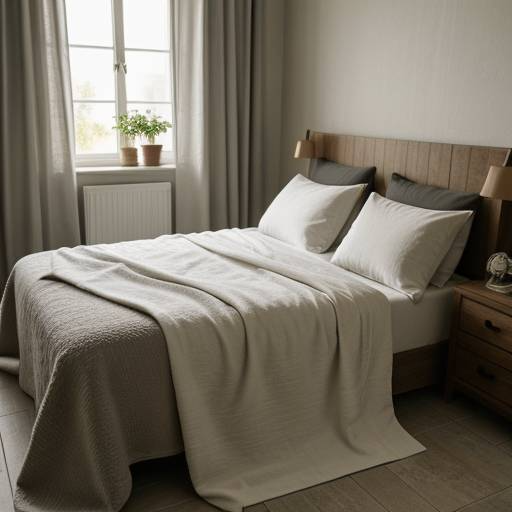
Benefits of Eco-Friendly Bedding and Textiles:
- Reduces exposure to harmful chemicals and allergens
- Supports sustainable production methods
- Contributes to a healthier sleep environment
- Helps minimize environmental impact
By making the switch to eco-friendly bedding and textiles, you can create a master bedroom that not only promotes sustainable living but also prioritizes your health and well-being.
Smart Home Technology for Energy Efficiency
Incorporating smart home technology is a game-changer when it comes to creating an eco-friendly HDB master bedroom. By utilizing smart devices and home automation systems, you can optimize energy efficiency and enhance the overall sustainability of your living space.
One of the key benefits of smart home technology is the ability to control and monitor lighting, temperature, and energy usage in your HDB. Smart lighting systems, for example, allow you to adjust the brightness and color of your bedroom lights, creating the perfect ambiance while minimizing energy consumption.
Smart thermostats provide precise control over your bedroom’s temperature, allowing you to set schedules and ensure optimal comfort while minimizing energy waste. With the ability to remotely monitor and adjust the temperature, you can avoid unnecessary energy usage when you’re away from home.
Smart home technology can optimize energy usage and enhance the sustainability of your HDB master bedroom.
Benefits of Smart Home Technology in an Eco-Friendly HDB Master Bedroom
- Energy Efficiency: By automating and controlling lighting, temperature, and energy usage, smart home technology can help you significantly reduce your energy consumption, resulting in lower utility bills and a smaller carbon footprint.
- Convenience: With smart devices and automation systems, you can easily control and monitor your bedroom’s functionalities from anywhere in the house or even when you’re away.
- Customization: Smart home technology allows you to personalize and tailor your bedroom’s settings to suit your needs and preferences. From adjusting lighting levels to creating the perfect temperature, you have full control over your living environment.
- Enhanced Safety: Smart home technology can include security features such as smart locks and motion sensors, adding an extra layer of safety and peace of mind to your master bedroom.
Examples of Smart Home Technology for an Energy-Efficient Master Bedroom
- Smart Lighting Systems: These systems offer the ability to customize lighting levels, colors, and schedules, allowing for energy-efficient and aesthetically pleasing bedroom lighting.
- Smart Thermostats: By intelligently regulating temperature settings, these devices can optimize energy usage while maintaining comfort.
- Automated Window Coverings: Motorized blinds or curtains can be controlled through smart devices, enabling you to adjust natural light levels and optimize energy efficiency.
- Smart Plugs and Power Strips: These devices allow you to control and monitor the energy usage of your bedroom appliances, reducing standby power consumption.
Incorporating smart home technology into your HDB master bedroom design not only enhances energy efficiency but also adds a touch of modernity and convenience to your living space. By embracing the potential of smart home systems, you can create a more sustainable and eco-friendly master bedroom.
Biophilic Design for Natural Connection
Biophilic design is an innovative approach that aims to connect indoor spaces with nature by incorporating natural elements and patterns. In this section, we will explore how biophilic design principles can be applied to your master bedroom, creating a stronger connection with nature and improving overall well-being. By embracing biophilic design, you can transform your master bedroom into a sustainable and calming living space.
1. Incorporating Natural Materials
One way to embrace biophilic design in your master bedroom is by incorporating natural materials. Choose furniture, flooring, and accents made from sustainable resources such as solid wood, bamboo, or organic fabrics. These materials not only add a touch of nature to your space but also contribute to a more eco-friendly HDB design.
2. Introducing Natural Lighting
Another key aspect of biophilic design is maximizing natural lighting. Allow ample sunlight to enter your master bedroom by using large windows or skylights. Natural light not only creates a warm and inviting atmosphere but also enhances our connection with the natural world outside.
3. Integrating Indoor Plants
Bringing the outdoors in through indoor plants is a fundamental principle of biophilic design. Choose a variety of plants that thrive indoors, such as peace lilies, snake plants, or money plants. These plants not only purify the air but also add a refreshing and calming element to your master bedroom.
4. Creating a Nature-Inspired Color Palette
Selecting a nature-inspired color palette can further enhance the biophilic design of your master bedroom. Opt for soothing earth tones, such as greens, blues, and browns, to mimic the colors found in the natural environment. These colors evoke a sense of tranquility and promote relaxation.
5. Incorporating Natural Patterns and Textures
Add visual interest to your master bedroom by incorporating natural patterns and textures. Consider using wallpapers or textiles with leaf patterns, floral motifs, or wood grain textures. These elements evoke a sense of nature, making your space feel more organic and connected to the natural world.
By applying these biophilic design principles in your master bedroom, you can create a sustainable living space that promotes well-being and provides a sanctuary for relaxation. Let nature guide your design choices and transform your master bedroom into a tranquil oasis.
Efficient Storage Solutions
In an eco-friendly master bedroom design, efficient storage solutions are essential to minimize clutter and maximize space utilization. By incorporating sustainable storage options, you can create a more organized and sustainable living environment.
Multi-Functional Furniture
One effective way to optimize storage in your master bedroom is by using multi-functional furniture. Invest in pieces that serve dual purposes, such as beds with built-in drawers or ottomans with hidden storage compartments. These versatile furniture pieces not only provide ample storage space but also contribute to the overall aesthetics of your eco-friendly HDB design.
Built-In Storage Systems
Consider incorporating built-in storage systems into your master bedroom design. Customized wardrobes, shelving units, and wall-mounted cabinets can be strategically placed to maximize storage capacity while minimizing visual clutter. These built-in storage solutions offer seamless integration with the overall design and ensure efficient utilization of available space.
Organizational Solutions
Implementing effective organizational solutions can further enhance the efficiency of your storage systems. Utilize storage baskets, dividers, and trays to keep smaller items organized and easily accessible. Consider installing hooks or racks on walls to hang items like bags, scarves, and hats. These small but effective solutions can make a significant difference in maintaining a tidy and clutter-free master bedroom.
Sustainable Material Choices
When selecting storage furniture and systems, prioritize sustainable materials. Opt for pieces made from eco-friendly materials like responsibly sourced wood or recycled materials. This ensures that your storage solutions align with your commitment to an eco-friendly HDB design and sustainable living space.
Incorporating efficient storage solutions into your master bedroom design not only helps you stay organized but also contributes to a more sustainable and visually appealing living space. By utilizing multi-functional furniture, built-in storage systems, and incorporating sustainable materials, your master bedroom will become a sanctuary of order, style, and eco-consciousness.
Creating a Relaxing and Tranquil Atmosphere
A master bedroom should be a sanctuary for relaxation and tranquility. To achieve this, it’s important to consider design elements and strategies that promote a calm ambiance while also aligning with eco-friendly HDB design principles, and the concept of sustainable living space. By incorporating these elements, you can create a soothing environment that enhances your well-being and contributes to a more sustainable lifestyle.
One effective way to create a calming atmosphere is by incorporating natural colors into your master bedroom design. Consider using earth tones, soft pastels, or shades inspired by nature such as serene greens and calming blues. These colors can evoke a sense of tranquility and have a positive impact on your mood and overall well-being.
To further enhance the eco-friendly and tranquil environment, opt for low-VOC (volatile organic compound) paints for your bedroom walls. These paints have lower levels of harmful VOCs, reducing indoor air pollution and promoting better air quality. Look for paint brands that offer environmentally friendly options and meet eco-certification standards.
Integrating soundproofing techniques is another essential aspect of creating a peaceful space. By using acoustic panels or soundproof curtains, you can reduce external noise and create a serene ambiance in your master bedroom. This is particularly beneficial if your HDB unit is located in a busy area or near noise sources such as highways or construction sites.
Key Points
- Incorporate natural colors inspired by nature to create a calming atmosphere.
- Use low-VOC paints to promote a healthier indoor environment.
- Integrate soundproofing techniques to reduce external noise.
By employing these design elements and strategies, you can transform your master bedroom into a peaceful retreat that aligns with eco-friendly HDB design principles and promotes sustainable living space. Prioritizing a relaxing and tranquil atmosphere not only enhances your personal well-being but also contributes to your commitment to a sustainable lifestyle.
Mindful Consumption and Waste Reduction
Mindful consumption and waste reduction are fundamental elements in designing an eco-friendly HDB master bedroom. By embracing the concept of minimalism and adopting mindful consumption habits, you can create a more sustainable living space while reducing your environmental footprint.
The Power of Minimalism
Minimalism is a design philosophy that emphasizes simplicity, functionality, and decluttering. By applying minimalism to your master bedroom design, you can create a serene and peaceful atmosphere while reducing the amount of waste generated. Consider these minimalistic principles:
- Simplify your furniture and decor choices, opting for essential items that have multiple functions.
- Focus on quality over quantity, investing in durable and long-lasting pieces that won’t need to be replaced frequently.
- Declutter your space regularly, getting rid of items that no longer serve a purpose and donating or recycling them responsibly.
Reducing Waste through Material Selection
When renovating your master bedroom, make conscious choices about the materials you use. Opt for eco-friendly building materials that are sustainable, recyclable, and have a low environmental impact, such as reclaimed wood or bamboo. These materials not only contribute to a more sustainable living space but also add a touch of natural beauty to your bedroom design.
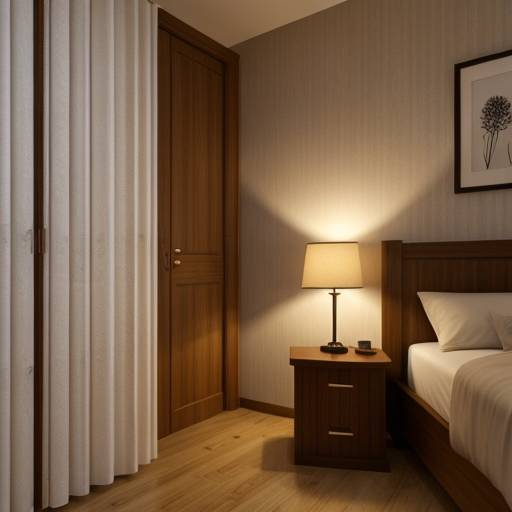
Repurposing and Recycling
Repurposing and recycling are effective ways to reduce waste and extend the lifespan of materials. Instead of discarding old furniture or decor items, consider repurposing them in creative ways. For example, transform an old wooden ladder into a stylish bookshelf or turn glass jars into decorative storage containers. When it’s time to dispose of items, ensure you recycle them properly to minimize their impact on the environment.
By paying attention to your consumption habits and implementing waste reduction strategies, you can play a significant role in creating a more sustainable and environmentally conscious master bedroom design.
Conclusion
Designing an eco-friendly HDB master bedroom requires a thoughtful approach that encompasses sustainable materials, energy-efficient solutions, and mindful consumption practices. By incorporating green building principles into your design, you can create a stylish and eco-friendly space that reflects your commitment to sustainable living.
Start by carefully selecting sustainable materials for your master bedroom, such as reclaimed wood or bamboo furniture, to reduce your environmental impact. Additionally, consider integrating energy-efficient lighting solutions and optimizing natural ventilation to minimize energy consumption and improve indoor air quality.
Creating a tranquil atmosphere in your master bedroom is essential for your well-being. Incorporate biophilic design elements, like natural colors and patterns, to establish a deeper connection with nature. Furthermore, implement efficient storage solutions and prioritize mindful consumption to reduce waste and maintain a clutter-free environment.
Embrace the potential of eco-friendly HDB designs and craft a personal space that aligns with your values of sustainability and style. By taking these steps, you can create a master bedroom that not only serves as a sanctuary for relaxation but also contributes to a more sustainable and environmentally conscious lifestyle.
